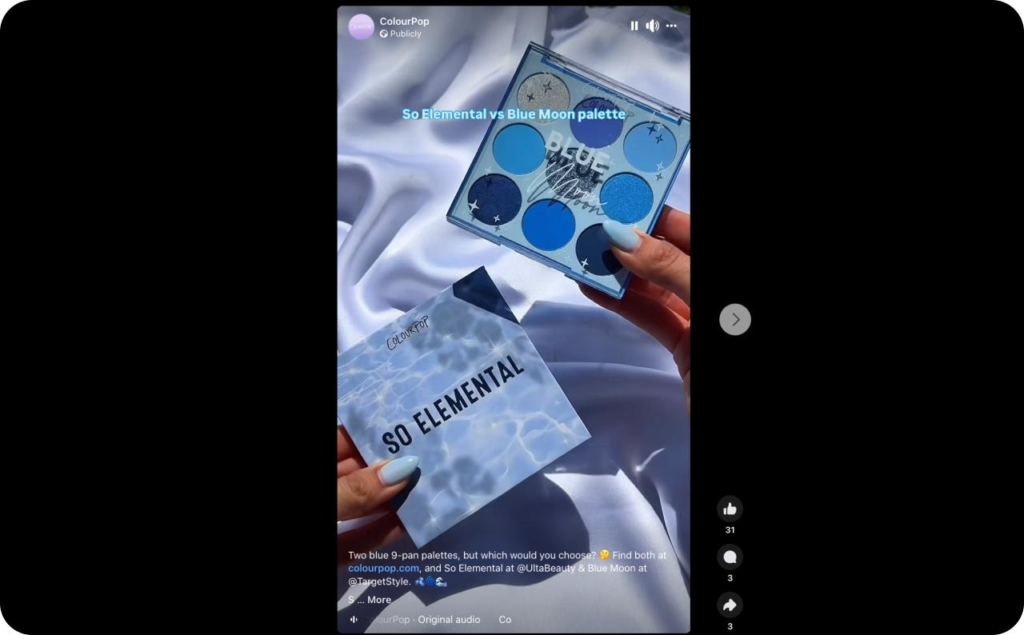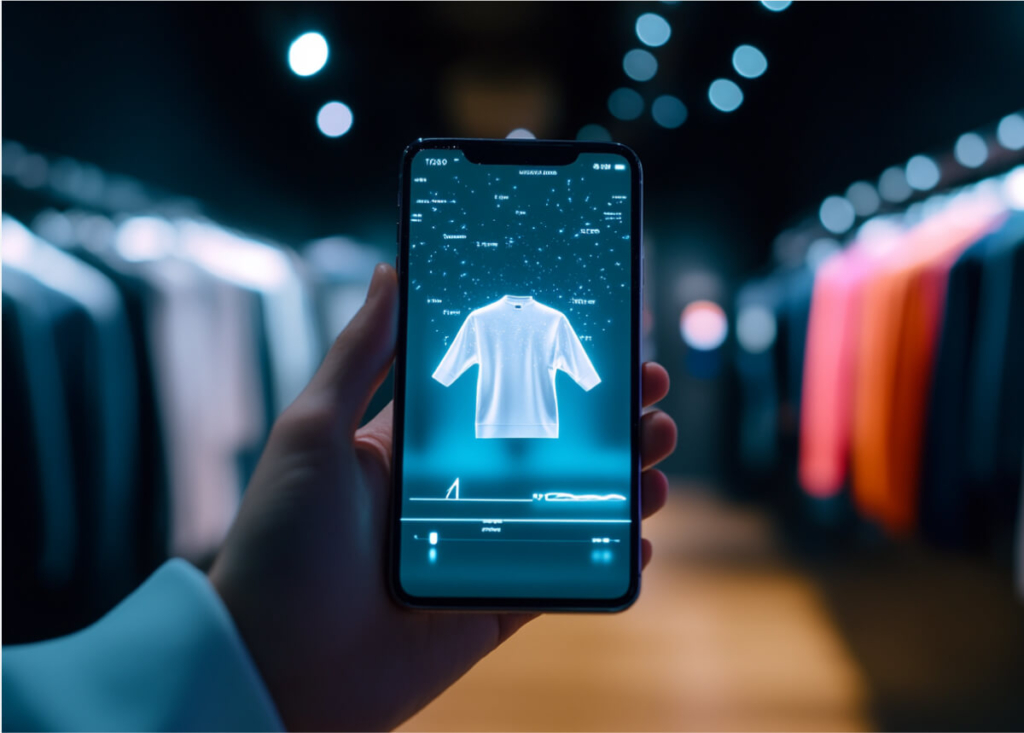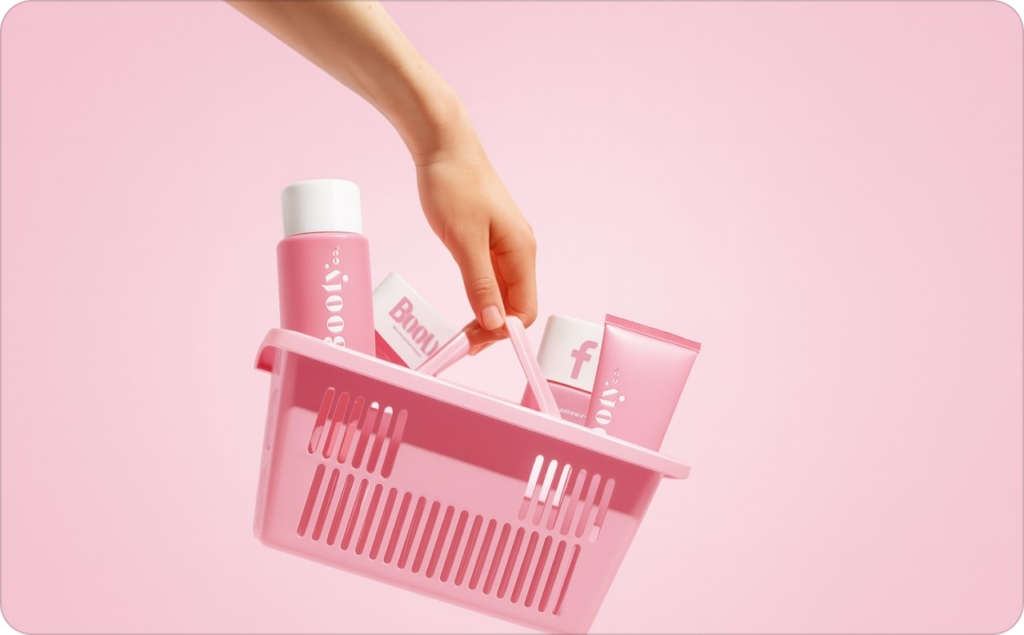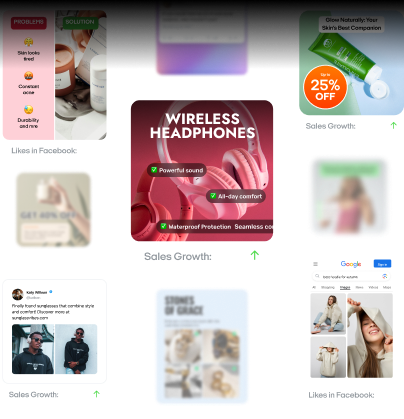5 best practices for creating Facebook video ads: Boost your audience engagement
Create high-impact Facebook video ads! Learn 5 best practices to boost engagement and connect with your audience more effectively.
If your Facebook campaigns still lean on static images, you’re overpaying for attention. So what is a Facebook Video Ad? It’s a short clip, up to 240 minutes, launched through Ads Manager and served in Feed, Reels, Stories, or Facebook Watch. Built for the platform’s mobile audience, it layers motion, sound, and text to stop the scroll. Because 94 % of users browse on a phone, vertical or square frames fill the screen and raise watch time.
Authenticity drives views, too. Statista reports that from January to July 2022, influencer videos captured 60 % of all Facebook video views, while media companies claimed 30 % and brand or aggregator clips just 10 %. Viewers reward relatable stories and video delivers them. No surprise, then, that video ads earn 1.5× more clicks and 59 % higher engagement than photos.
Those gains ripple through your funnel: stronger ROI, rapid video ad growth, and richer brand storytelling that builds trust. Each like, share, or comment adds fresh social proof, boosts auction scores, and expands reach without raising spend.
In the pages ahead, you’ll learn how to hook viewers in two seconds, pick specs that protect quality and budget, and turn creative concepts into campaigns that compound over time.

Facebook video ad defined
A Facebook Video Ad is a type of interactive ads built inside Ads Manager, not a casual video upload. Each clip carries pixel events, a declared campaign objective, and lives in Facebook’s auction, where the algorithm bids and optimizes in real time. This structure lets the platform treat your creative as dynamic video content linked to clear goals — reach, leads, or sales.
Because the ad is tagged at upload, every view feeds attribution models and populates custom audiences for future retargeting. Think of it as coded media, purpose-built for learning and conversion, rather than a standalone post.
Core formats and placements
Facebook offers three primary video ad formats. Feed and Reels placements sit between user posts; square or 4 : 5 ratios pair with captions and quick CTAs for scroll-stopping impact. Stories run vertical 9 : 16 and fill the screen for up to 15 seconds — ideal for swipe-up offers on mobile.
In-stream video plays mid-content on Facebook Watch, reaching viewers already primed for longer viewing. Each format draws from the same audience data, so engagement in one placement boosts delivery efficiency across all others, raising user interaction and return on ad spend.
Ads manager controls and optimization
Inside Ads Manager video ads, marketers choose automatic placement to let the algorithm allocate budget to the top-performing slot, or lock a format to test a hypothesis — classic placement strategies. Creative elements such as thumbnails, captions, and hooks can rotate through Dynamic Creative testing, while three-second viewers form seed lists for cost-effective retargeting.
All creative, audience, and budget decisions stay in one dashboard, enabling rapid diagnostics: pause high-CPM segments, scale low-CPA ad sets, and refine messaging without leaving the interface. The result is a closed feedback loop that turns data into incremental profit.

Photo source: Facebook
Why use Facebook video ads?
Facebook Video Ads cut cost-per-acquisition by thirty percent and lift click-throughs one-and-a-half times. Sprout Social reports that 60 percent of shoppers discover new products on Facebook, just one point behind Instagram’s 61 percent, so video has a massive, ready audience. Those findings confirm that video ads give you more visits, sales, and first-touch impressions for the same spend.
Storytelling that sells: Real cases
GlowUp swapped five static photos for a fifteen-second how-to clip and tripled purchase ROAS in fourteen days. Gymshark teased a Black Friday launch with a fast-cut workout reel and doubled its image-ad conversion rate. These wins prove how brand storytelling in motion drives revenue.
Engagement loops: Retargeting and social proof
Autoplay starts your story before a thumb stops. Those early seconds feed the algorithm richer engagement metrics, lowering bid prices. Ads Manager then builds an audience of viewers who watched three seconds; show them a follow-up discount video and close the sale. Add creator clips, Statista says influencers own sixty percent of Facebook video views, and you borrow instant social proof.
Pro tips for higher ROI
- Hook viewers with movement in the first two seconds
- Shoot vertical for Stories and Reels to fill the screen
- Burn captions into the file; ninety percent of users watch muted
- Split-test six-second loops for cheap reach and thirty-second cuts for conversion optimization
- Use AI for Facebook ads optimization
The takeaway
These combined video ad benefits — lower costs, deeper engagement, and smarter retargeting — stack fast. Now that the data and cases prove higher ROI, let’s move on to the creative best practices that make those results repeatable.
Best practices for creating Facebook video ads
Build, preview, and launch high-performing video ads with ease. AI Facebook ad creator helps you design viral Facebook ads in minutes. You’re here for the best practices for Facebook video ads, not theory. The next few minutes will give you a step-by-step game plan for how to optimize Facebook video ad creative, from first frame to final CTA, so every dollar works harder in the auction.
Why the first 2 seconds decide success
Mobile users scroll 1.7 times faster than desktop visitors, giving Facebook Video Ads a blink-and-miss window for impact. The opening frame should deliver “immediate visual impact” through sudden motion, high-contrast color, or a bold value claim. WordStream’s benchmark shows that a strong start can extend viewer attention to 15–30 seconds.
Gymshark proves the point: replacing a static product shot with a jump-cut squat demo lifted the view-through rate by 26%. The lesson is clear — creative hooks must command attention before the thumb moves again.
Hook formulas and micro-testing workflow
Effective hooks follow simple patterns. Example 1: “If you want X, do Y now.” Example 2: “Most people fail at X — here’s the five-second fix.” Load at least three hook variations into Ads Manager’s split-testing tool, run each for 1 000 impressions, and pause the lowest performer.
Early wins reduce CPM across the campaign by boosting engagement signals. Keep eye-catching thumbnails and brand logos consistent in every variant to isolate the true effect of your opening frame.
Thumbnail specs that earn the click
Facebook Video Ads pull the first clear frame by default, but savvy marketers override it with a custom thumbnail engineered for clicks. Set the canvas to 1 280 × 720 px, keep on-image text below 20 %, and ring the edge with a high-contrast brand color.
Meta’s Creative Shop reports that warm orange borders lift click-through rate by 12 %. BuzzFeed’s Tasty applied this exact layout and recorded a 15 % jump in video completions. For extra lift, embed a subtle motion cue, think a blinking cursor or simmering pan, to spark curiosity without inflating file size.
Captions that convert silent scrollers
Roughly 90 % of Facebook users watch videos with the sound off, so captions aren’t optional, they’re conversion tools. Burn captions directly into the video when you need on-brand typography, or upload an SRT file for rapid edits and multilingual support.
Keep font size large enough for 5-inch screens and use white text on a semi-transparent black strip for legibility. “Mute-friendly captions” can reduce bounce rate by 18 % and raise average watch time by 11 seconds, turning silent views into engaged prospects.
Vertical first: Aspect ratios that deliver
Mobile accounts for 94 % of Facebook sessions, making vertical footage the default choice for mobile-first video ads. Shoot natively at 9 : 16 for Stories and Reels; then crop to 4 : 5 when repurposing the same creative for Feed. Staying inside this safe zone keeps logos and copy visible after Facebook’s auto-trim.
Dollar Shave Club proved the impact: running both ratios in a dynamic-creative campaign cut cost-per-landing-page-view by 18 %. Treat vertical video as the master asset and square or 4 : 5 as derivatives, this structure maintains design consistency while maximizing reach on every mobile device.
Technical tweaks for faster mobile playback
Optimizing export settings can shave both load time and CPM. Place the “moov atom” metadata at the start of your .MP4 file so videos begin buffering immediately, a boost for users on slower connections. Shoot at 60 fps to capture smooth motion, then export at 30 fps; you’ll preserve clarity while cutting file size nearly in half.
Combine this with a steady bitrate around 4 Mbps to ensure responsive design and crisp visuals across diverse network conditions. These micro-adjustments help Facebook’s delivery system classify your ad as “mobile-ready,” which can unlock lower bid prices and higher engagement.
Sound integration for silent scrollers
Ninety percent of Facebook viewers keep audio off, yet ads with sound still convert 23 percent better. Balance both modes by mixing upbeat music at – 16 LUFS and pairing it with clear on-screen captions. This dual-track approach lets mute viewers read the core value while sound-on users feel the energy.
Facebook’s internal tests show that adding a subtle “whoosh” effect to text animations lifts view-through rate by up to eight percent without prompting users to mute. Stick to AAC audio at 128 kbps and keep all spoken lines under eight words; shorter phrases sync well with fast-scrolling feeds and reinforce your brand’s sound integration in ads strategy.
Emotive storytelling that converts
Emotional branding turns casual scrollers into customers. A strong narrative arc — problem, demo, outcome — delivers this punch in seconds. GlowUp proved the model: its 15-second skincare video began with a visible blemish, showed a quick application, and ended with a radiant “after” shot. Mid-clip, the brand inserted a selfie testimonial at second nine, adding instant social proof.
Moreover, Facebook dynamic ads can significantly increase conversion rates by automatically showing the most relevant products to users based on their interests and browsing behavior. This personalized approach helps capture potential customers’ attention, encourages engagement, and drives more sales efficiently.
The result was a 3× lift in ROAS within two weeks. Keep your hero shot centered and use warm color grading to amplify relatability. When every frame supports a single storyline, you achieve Facebook video ad storytelling that resonates emotionally and capitalizes on both visual and auditory cues.
Harness trending influencer clips for instant reach
Influencer-led videos command 60% of all Facebook video views, making them the fastest lane to broad, low-cost reach. Provide micro-creators with a ready-made 9 : 16 template and whitelist the post so it can run as an ad directly from your brand page.
Pair the footage with Instagram Reels-approved trending audio; cross-platform familiarity boosts recall and has lowered view cost by up to 12 % across Hunchads client tests. Lock brand colors and logos into the first frame to maintain identity while benefiting from the creator’s voice.
This precise blend of influencer endorsement and trend alignment delivers immediate social validation without diluting brand guidelines.
Combine UGC and sequential retargeting for conversion lift
User-generated content adds proof; sequential retargeting turns that proof into purchases. Beauty label ColourPop ran an influencer unboxing for awareness, then retargeted anyone who watched 95% of the clip with a ten-second discount video, lifting repeat purchase rate 22% in two weeks. Understanding how small businesses can use UGC Facebook ads to grow sales fast is key to building stronger connections with potential buyers — driving higher engagement and speeding up purchase decisions.
Build similar funnels by capturing testimonial snippets, then creating a retargeting audience in Ads Manager. Show a value-driven follow-up within seven days to stay top-of-mind. Refresh hooks or thumbnails every ten days, or sooner if CPM rises 50 % over account average, to beat ad fatigue and keep your social proof fresh and persuasive.

Photo source: ColourPop on Facebook
Technical specifications & budget optimization
To get the best ROI from your Facebook video ad budget, you need tight video specs and a clear bidding plan.
A Feed or Reels clip should sit in a 4 : 5 frame at 1080 × 1080 and stay under sixty seconds. Stories thrive at 9 : 16, 1080 × 1920, and fifteen seconds per card, while in-stream spots on Facebook Watch use 16 : 9, 1280 × 720, and five-to-fifteen-second runs. Keep files below thirty megabytes and choose .MP4 unless you require a ProRes alpha channel. Facebook recommends 23–30 fps and AAC audio at 128 kbps; lower settings risk re-encoding that inflates CPM. These numbers cover the core Facebook video ad dimensions and satisfy every common placement spec.
Aim for a 4 Mbps bitrate and add an SRT caption file for quick edits, or burn captions in if brand fonts matter. Select a square thumbnail so dark-mode users still see your logo. These small tweaks form the backbone of reliable technical optimization.
Break-even CPA sets your guardrail. Calculate it fast: if each unit nets a $40 margin and overhead is $10, your max CPA is $30. Start campaigns with around fifty times that target, about $1 500, for learning. Set a Cost Cap at $30, activate Advantage+ budget, and you’ve begun ad budget optimization.
Daily budgets keep spend steady; lifetime budgets smooth weekend dips. Pick daily while testing, then switch to lifetime once results stabilize. Review spend every forty-eight hours and raise or cut caps in ten-percent steps.
Use Cost Cap for stable scale, switch to Bid Cap during flash sales, and choose Highest-Volume if reach outweighs efficiency, simple rules that fit most advanced CPM bidding strategies. When holiday inventory tightens, a shoe brand followed this “advanced CPM bidding Facebook” approach and trimmed acquisition costs eighteen percent in seven days.
Watch core health markers: aim for at least 1 % CTR, a United States CPM under $12, and an Average-or-better Quality Ranking. If frequency tops three or CPM climbs twenty percent week-over-week, refresh the hook or narrow your audience.
Retarget viewers who finished ninety-five percent of any clip, then show a shorter offer video. A local bakery tested this sequence with a $1 500 learn budget, hit a $9 CPA in week two, and dropped to $7 after swapping to Bid Cap, proof that specs and spend work best together.
Specs and spend are now locked; next, see which other Facebook ad formats can amplify your video wins across the funnel.
Additional Facebook ad types: Contextual comparison
You’ve dialed in video specs and budget. Now choose the right format for each goal. Here’s a quick ad format comparison that shows when Facebook video vs. carousel or other units makes sense.
| Format | How it works | Best use | Engagement edge |
| Video ads | Autoplay clips that combine motion, sound, and captions. | Product demos, storytelling, high-attention campaigns. | Highest watch time and share rate. |
| Carousel ads | Up to 10 swipeable images or videos. | Show product variants, step-by-step features. | 30 % more clicks when users need options. |
| Slideshow ads | Looping image sequence that mimics motion but with smaller files. | Low-bandwidth regions, quick launches from static assets. | Loads 5× faster on slow networks. |
| Collection ads | Cover video or image plus a swipeable product grid | Mobile shopping and instant catalogs. | Converts 50 % better for e-commerce browse sessions. |
Why pick video? It wins on attention span and emotional punch, making it the best ad format for engagement when you need brand recall or product proof. Choose carousel for comparison shopping, slideshow for lightweight launches, and collection when your catalog is the star.
This multiformat advertising approach lets you match creative flexibility to every step of the funnel, without abandoning the high-impact benefits of video.
Conclusion & key takeaways
Here’s your quick-fire implementation guide for stronger Facebook video ads. First, open with motion or a bold claim so you hook viewers within two seconds; that single change lifts watch time and makes every impression cheaper. Second, match the correct aspect ratio to each placement — 4 : 5 for Feed, 9 : 16 for Stories, and 16 : 9 for Watch — while keeping the file under thirty megabytes to avoid costly re-encoding. Third, add captions the smart way: burn brand fonts directly into the clip if style matters, or upload an SRT file when you need fast edits or multiple languages.
Next, put budget discipline in place by setting break-even CPA as your Cost Cap, letting Advantage+ handle pacing, and checking spend every forty-eight hours. When click-through rate slips below one percent, refresh hooks, thumbnails, or CTAs instead of raising bids. Finally, retarget anyone who watches ninety-five percent of a video with a shorter offer clip to close the loop. Pick one live campaign, apply two of these actionable ad strategies today, measure results in a week, and then scale what works. Continuous testing turns small tweaks into lasting gains.
Also recommended



